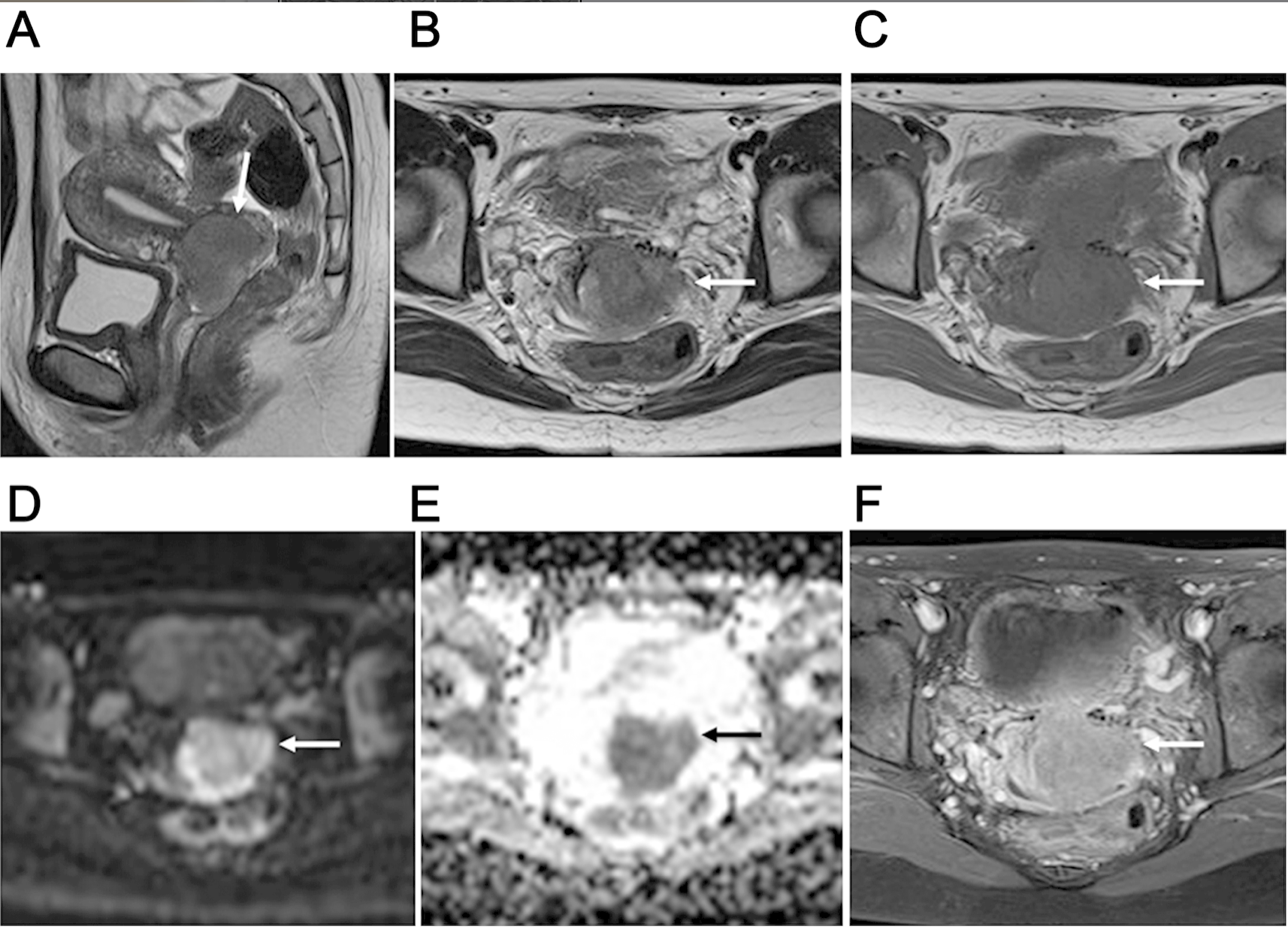MRI Accurately Stages Cervical Neuroendocrine Carcinoma
Prognosis for these patients is poor, but MRI can help providers reliably stage their disease.
Neuroendocrine carcinoma (NEC) in the uterine cervix is rare, and patients affected by it usually have a poor prognosis. Consequently, accurate staging is important – and newly published research shows MRI can accomplish the task.
Looking to provide better guidance for cancer staging and potential survival, a team of researchers from Japan examined whether MRI could pinpoint distinct features of uterine cervical NEC and stage it accurately. They published their findings in Oncotarget.
“Neuroendocrine carcinomas (NEC) of the female genital tract are aggressive uncommon tumors that usually involve the uterine cervix and ovaries, though are very rarely seen in the endometrium,” said lead study author Kazuhiro Kitajima, M.D., Ph.D., from The Hyogo College of Medicine radiology department.
Figure 2: 34-year-old woman with FIGO stage IIB2 uterine cervical small cell neuroendocrine carcinoma. (A) Lobulated mass with homogeneous and slightly hyperintense signal in the uterine cervix (arrow) shown by sagittal T2-weighted imaging. (B) Ill-defined mass with invasion of left parametrium (arrow) in axial T2-weighted image. Subsequent surgery findings confirmed that MRI staging of parametrium invasion was correct. (C) Iso-intense mass invading left parametrium (arrow) shown by axial T1-weighted imaging. (D) Cervical mass with remarkably high signal intensity (arrow) shown by axial DWI. (E) Obvious diffusion restriction throughout tumor (arrow) shown by axial ADC map. (F) Weak tumor enhancement (arrow) shown by axial late-phase enhanced fat-suppressed T1-weighted imaging (240 seconds after Gd-DTPA administration). Recurrence was noted 10.8 months after surgery and death at 37.2 months. Credit: Oncotarget

Despite being a rare occurrence, he said, cervical NEC have a much higher incidence of lymphovascular invasion, lymphatic and distal metastasis, and recurrence than other do other subtypes of uterine cervical malignancies, such as squamous cell carcinoma and adenocarcinoma. Plus, smear and cervical biopsies are usually not sensitive or conclusive enough to make a diagnosis.
Related Content: AI Algorithm Detects Lymph Node Metastasis in Cervical Cancer on MRI
Given that, there is a need for a way to identify and accurately assess these tumors, and existing literature has pointed to such potential in MRI. To test this possibility themselves, Kitajima’s team enrolled 62 women, ranging from ages 26 to 82, who had histologically surgery-proven uterine cervical NEC, and examined them with T2-weighted MRI. The goal was to identify several distinct NEC features, including small and large cell neuroendocrine carcinoma, as well as other pathological correlations.
Based on their analysis, the team discovered that, among the 50 women in the group who underwent radical hysterectomy and lymphadenectomy without neoadjuvant chemotherapy, MRI was able to provide intra-pelvic T staging with 88-percent overall accuracy for pathology staging. Patient-based sensitivity, specificity, and accuracy for metastatic pelvic lymph node detection was 38.5 percent, 100 percent, and 83.3 percent, respectively.
In addition, Kitajima said, the team discovered three-year progression-free for FIGO I, II, III, and IV, were 64.3 percent, 80.9 percent, 50 percent, and 64.3 percent, respectively. Unfortunately, all survival rates were 0 percent.
Ultimately, he said, pelvic MRI provides accurate and reliable imaging findings for T staging with this patient group.
“A definitive diagnosis based on pre-operative MRI results seems to be difficult,” he said. “Nevertheless, the present, as well as other previous findings, indicate that a homogenous lesion texture with an obvious restricted diffusion throughout the tumor are suggestive of uterine cervical NEC.”
For more coverage based on industry expert insights and research, subscribe to the Diagnostic Imaging e-Newsletter here.
MRI Study at ARRS Raises Questions About Disparities in Detection of MASLD
May 3rd 2025New research revealed that Hispanic Americans with evidence of hepatic steatosis on MRI but no formal diagnosis of MASLD had over a fourfold higher risk of developing hepatocellular carcinoma in comparison to those who had a formal diagnosis of MASLD.